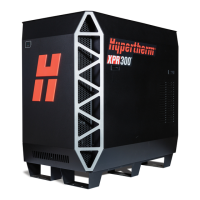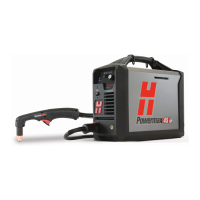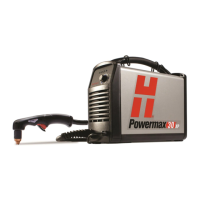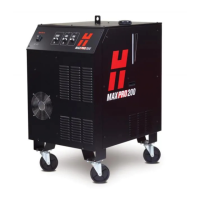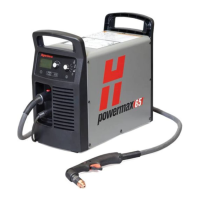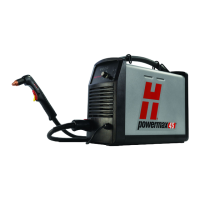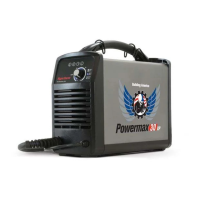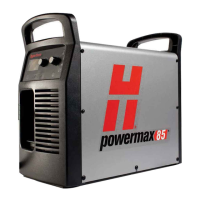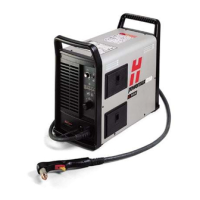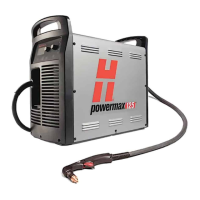Operation
232 809480 Instruction Manual XPR300
Recommendations for piercing processes
For the best piercing outcomes follow these recommendations:
Always start with the default settings for piercing the thickness of metal that you want to
pierce.
Allow a lead-in distance that is approximately the same thickness as the metal to be pierced.
For example, for 50 mm (2 inch) metal, use a 50 mm (2 inch) lead-in.
Keep the torch above cut height until it passes over the puddle of molten metal created by
the pierce. Puddle avoidance minimizes shield damage.
Make sure to follow transfer height and pierce height recommendations during piercing
processes. Refer to the XPR Cut Charts Instruction Manual (809830).
If it is difficult to pierce the workpiece (because of metal type or thickness):
Increase the shield pierce flow (if this function is available with your CNC).
For this to work, the shield pierce signal must be activated. For information
about how to activate the shield pierce signal, see the instruction manual
that came with your CNC.
Use a “moving” or “flying” pierce technique, but only if you are an experienced operator.
With a “moving” or “flying” pierce technique, torch motion starts
immediately after arc transfer and during piercing. Do not attempt this
technique unless you are an experienced operator. Damage to the
torch, lifter, or other system components is possible.
Choose an argon-assist process to pierce thicker than 45 mm (1.75 inch) for mild steel.
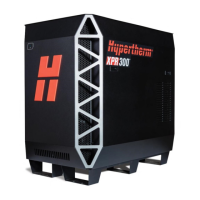
